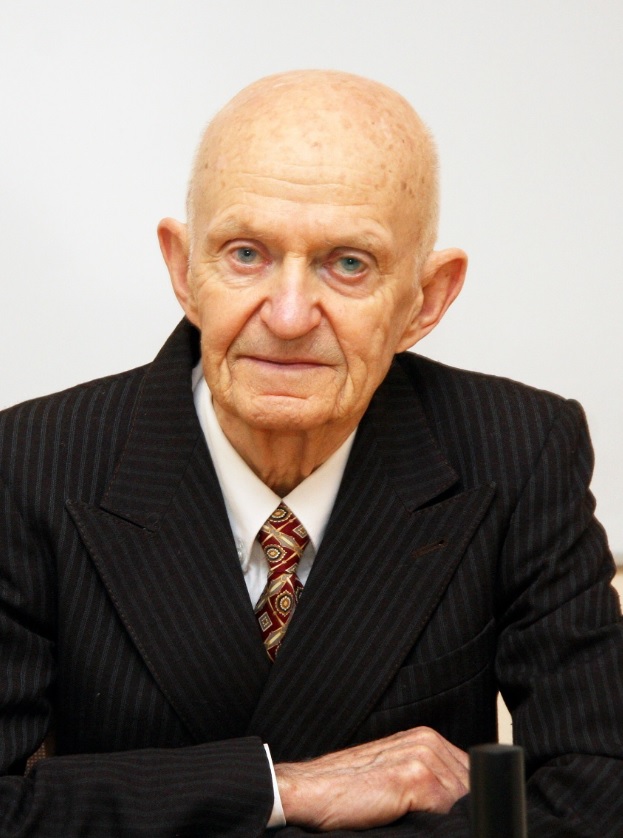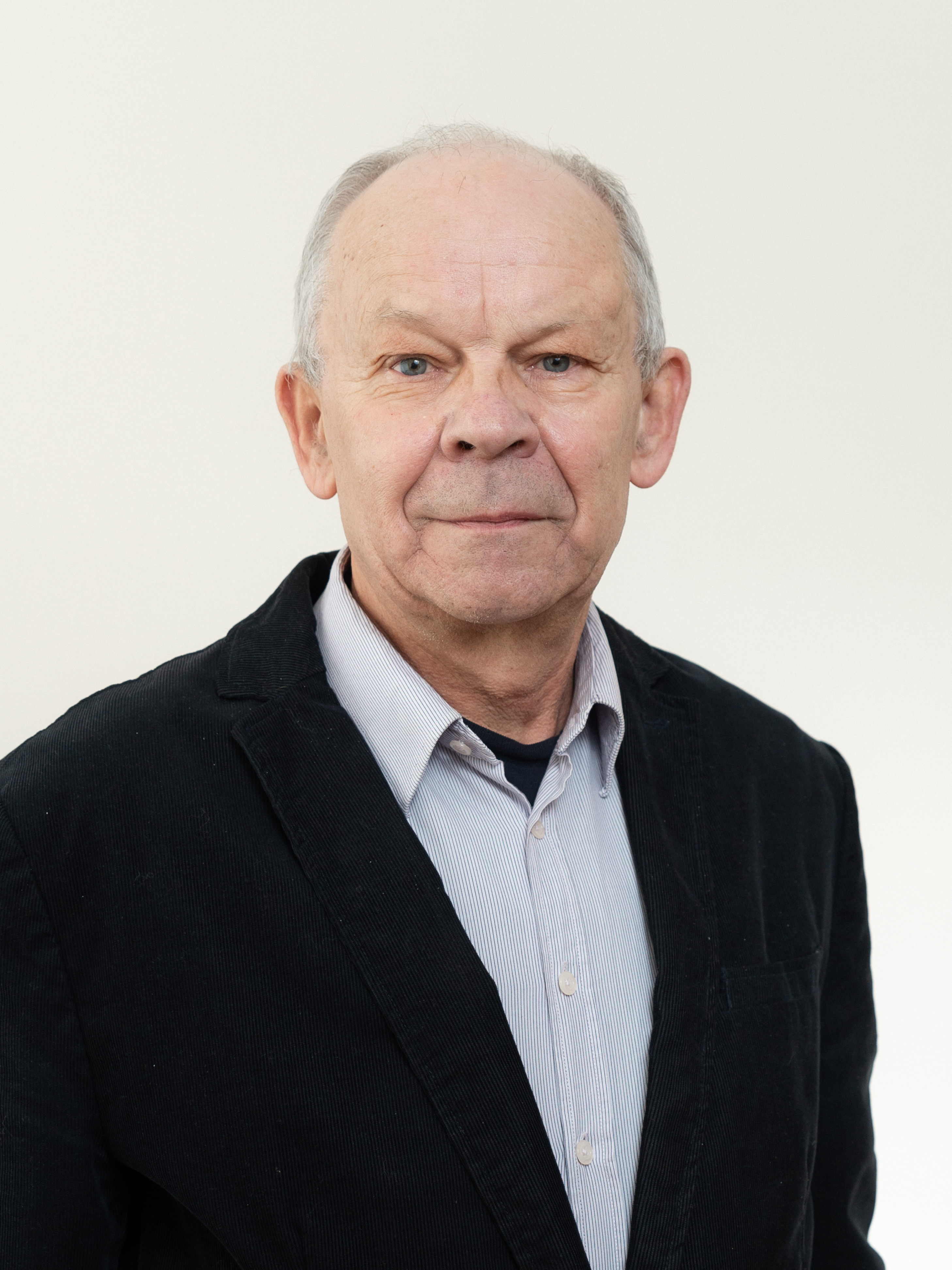Doctoral studies
History
Kostas Žukauskas
Work related with electronic computers commenced at the Lithuanian Academy of Science in rather a complicated period - 1956-1957 - when the USSR was guided by Nikita Khrushchev. On the one hand, the entire system, generated by Stalin, for persecuting inhabitants seemed to retreat into the part, but on the other hand, some branches of science and engineering were still persecuted and nagged. It suffices to mention N. Khrushchev´s maize problem and ban of genetics and cybernetics. In a short vocabulary of philosophy one can read: ´Cybernetics is a bourgeois pseudo-science´, and the leaders of the then communist party shouted. In addition, the computer science a constituent part of cybernetics - just budding in the USSR territory fell into the range of eucharist strata: as a matter of fact, rockets could be controlled only by electronic computers, since the reaction of man-operators was too slow. Thus, almost all the investigations in the field of computer science were made secret, they were not allowed to be published in public press, for a long time dissertations on this topic were banned to maintain, the republican censors prohibited even to mention the computer parameters in press in case they had not been mentioned previously in all-union newspapers.
The republican initiators of computer science rallied and encouraged to study by a famous Lithuanian physicist and organizer of theoretical physics academician Adolfas Jucys, had to work under such conditions, at first by studying the design of electronic computers and the basics of programming. The initiative of A. Jucys was backed by the present academicians and chiefs of mathematical science J. Kubilius and V. Statulevičius, being young mathematicians with doctor´s degrees at that time.
At that time academician A. Jucys was improving statistical methods that described electron movement in atoms. This research needed solutions to complex integro-differential Hartree-Fock equations. These equations were solved then by approximate numerical methods, using mechanical and electromechanical arithmometers, and solution of one system of equations has lasted for several months. It is only by use of electronic computers that one could essentially shorten the solution time of those equations.
Since 1955 academician A. Jucys has begun looking for scientific institutions that would be able to train the republican people to work in the area of computer science. We appealed to the Lomonosow University at Moscow and its administrators agreed to give us an electronic integrator „ELI-12", though the hardware base of the Moscow University was scants at that time. This integrator was able to solve systems of high order nonlinear differential equations, using the principle of statistical simulation. The electronic integrator was brought to the Vilnius Pedagogical University and was employed by the university students-physicists for solving course and diploma problems, however, it was not fit for solving Hartree-Fock equations.
In 1956, the Institute of Physics and Mathematics was founded as an affiliate of the Lithuanian Academy of Sciences, and academician A. Jucys became its first director. Then there arose a better opportunity to appeal to the scientific research institutions of the USSR Academy of Sciences that were better technically and financially provided than high schools. The Computing Centre of the USSR Academy of Sciences was chosen as a basis for probation, and its director academician A. Dorodnycin, a famous scientist and intellectual of great erudition, kindly agreed to accept the representatives of our republic to study computer sciences on the probation basis.
In the spring of 1957, physicists-theoreticians J. Glembockis and K. Zukauskas left for long-term probations at the Computing Centre of the USSR Academy of Sciences. The former studied the basics of programming and learned to solve the problems of quantum atom theory in practice by using a powerful electronic computer „Strela-3" that was functioning at the Computer Centre of the USSR Academy of Sciences at that time. The latter studied the design of an electronic computer „Ural" and took part in the work of the team of researchers who were improving the main memory units of „Strela-3". With the help of academician A. Jucys we were a success to agree with the Institute of Precise Mechanics and Computing Technique of the USSR Academy of Sciences in which the author of this text K. Zukauskas was granted a right to study the design of the computer „BESM" and to familiarize with the latest scientific research work completed at that institute, while in the Institute of Engineering Physics he has analyzed the design of a specialized analog-to-code converter. Later on the knowledge was applied in designing an analog-code converter for the electronic computer „BESM-2M" of the Lithuanian Academy of Sciences.
In 1958, physicists-theoreticians J. Petkevičius and L. Kuzmickytė joined the group of Lithuanian probationers at the Computing Centre of the USSR Academy of Sciences. The former studied hardware, while the latter software. Sometimes A. Bandzaitis (now a professor of the Vilnius University) used to come here as well as other physicists-theoreticians. The largest group of probationers at the Computing Centre of the USSR Academy of Sciences was then from Georgia, while the Lithuanian group took a second place in number. The majority of probationers were working on the new electronic computer „BESM-2M" that has been just begun to exploit. This was a machine of the first generation with 3000 electronic lamps and (rather limited from the contemporary standpoint) technical facilities: the rate of calculations was about 9000 arithmetic or logical operations per second, the working memory ~10 kilobytes, and external memory - two drums 30 kilobytes each, 4 magnetic tape units 640 kilobytes each (without changing tape cassettes). The software of this computer consisted of 2 groups of programs:
- those meant for checking engineering devices and for detecting failures and „weak points" of the computer;
- a system for compiling and interpreting programs with a small library of subroutines conversion of digits from a binary to decimal system and vice versa, as well as subroutines of special functions).
During our stay there we have found out that the Volodarsk plant at Ulyanovsk will produce our computer „BESM-2" in series. Thanks to the persistence of academician A. Jucys and moral support of academician A. Dorodnycin the series „BESM-2" No 14 was allotted to the Lithuanian Academy of Sciences. Then the problem of receiving the electronic computer was solved soon. On November 23, 1960, Presidium of the Lithuanian Academy of Sciences signed an agreement with the Ulyanovsk plant and on March 28, 1961, the assembling and adjusting of the computer „BESM-2" of the Lithuanian Academy of Sciences was accomplished. In May 1961, huge blocks of the computer „BESM-2" were brought to Vilnius by railway. However, the building of the Computing Centre of the Lithuanian Academy of Sciences has not yet been completed by that time: building of the premises and assembling and updating of the computer („BESM-2M" has been derived from „BESM-2") were going on in parallel and even its acceptance tests (on July 13, 1962) took place in an uncompleted building. It was only on February 18, 1963 that regular computations were commenced. The computer has been exploited for about 8 years. Thousands of republican physicists, mathematicians, astronomers, engineers, medics, and economists made use of it. In the spring of 1971, the machine „BESM-2M" was discarded and demounted because its maintenance (its power in use was 43 KW) turned to be unprofitable as compared to other new computers of that period. Instead of it an electronic computer „BESM-6" was installed.
There are more interesting jobs done 20 or more years ago at the dawn of computer science in Lithuania, there are lots of unnamed people who did those jobs. Let us hope that somebody will write about them.
 Now you are in the 1st Lithuanian (.LT) domain.
Now you are in the 1st Lithuanian (.LT) domain. 






 Professor Mifodijus Sapagovas
Professor Mifodijus Sapagovas  Academician Vytautas Statulevičius
Academician Vytautas Statulevičius  Academician Juras Požela
Academician Juras Požela Academician Adolfas Jucys
Academician Adolfas Jucys  Aleksandras Baltrūnas
Aleksandras Baltrūnas
 Vidmantas Kastytis Bentkus
Vidmantas Kastytis Bentkus Academician Povilas Brazdžiūnas
Academician Povilas Brazdžiūnas Albertas Čaplinskas
Albertas Čaplinskas
 Algirdas Garliauskas
Algirdas Garliauskas
 Academician Bronius Grigelionis
Academician Bronius Grigelionis Stanislava Nerutė Kligienė
Stanislava Nerutė Kligienė Academician Jonas Kubilius
Academician Jonas Kubilius Eugenijus Kurilovas
Eugenijus Kurilovas Bronius Kvedaras
Bronius Kvedaras Antanas Leonas Lipeika
Antanas Leonas Lipeika
 Jonas Masiulis
Jonas Masiulis Vilius Matulis
Vilius Matulis Academician Jonas Mockus
Academician Jonas Mockus Rimantas Morkvėnas
Rimantas Morkvėnas
 Regimantas Ričardas Pliuškevičius
Regimantas Ričardas Pliuškevičius Academician Henrikas Pragarauskas
Academician Henrikas Pragarauskas
 Stasys Rutkauskas
Stasys Rutkauskas Vydūnas Šaltenis
Vydūnas Šaltenis


 Adolfas Laimutis Telksnys
Adolfas Laimutis Telksnys


 Konstantinas Žukauskas
Konstantinas Žukauskas